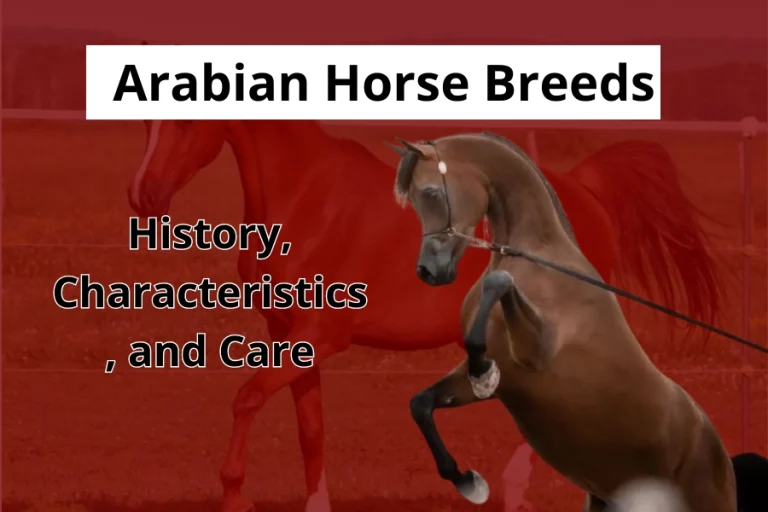Clydesdale Vs Regular Horse Breeds: Tell The Differences
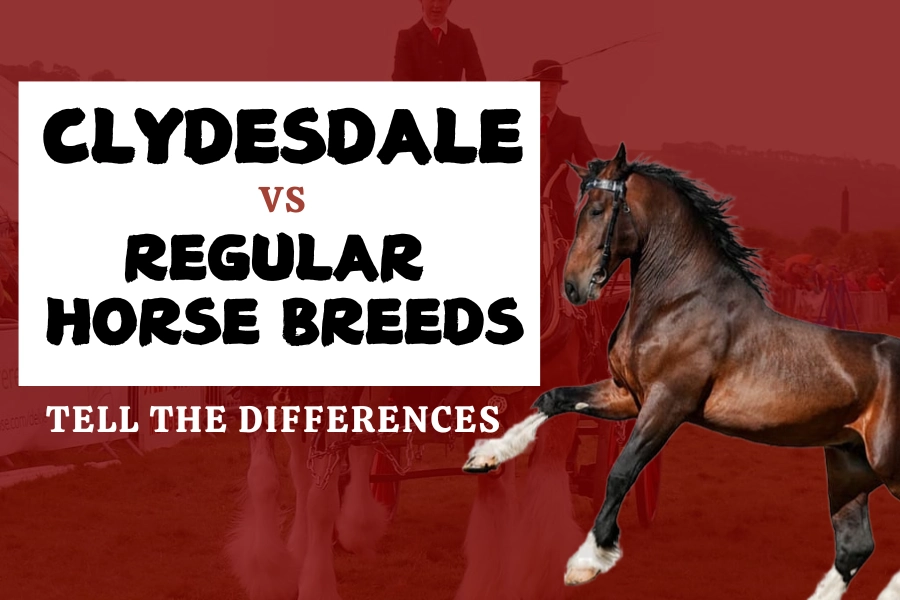
Anyone to be asked to describe a Clydesdale is expected to have a mental picture of a very large beautiful horse, noted for having feathers down the legs, drawing some beautiful carriage, or participating in a parade. Clydesdales are easy to identify but it is worth comparing them to everyday horse breeds. Differences and similarities between Clydesdales and other breeds of horses can be well defined by comparing them in many aspects.
We are going to bring you a full comparison of Clydesdale vs regular horse breeds, like physical characteristics, temperaments, and uses. You will be able to understand what makes them unique and dear to the people.
Facts About Clydesdale Horse Breeds
The Clydesdales had their origin in Scotland in the early 18th century, in the district of Lanarkshire, formerly called Clydesdale. Tall in height, with an imposing build and feathered legs, the Clydesdales are quite easy to recognize due to their majestic look. They were originally used for heavy farm work and hauling loads in industrial settings. Today, they feature prominently in processions and promotional events.
Facts About Regular Horse Breeds
There are many breeds of horses, and each one comes from a unique part of the world and adapts to specific climates, terrains, or purposes. Among others, some popular breeds you may know are Arabian from the Middle East’s deserts; the Thoroughbred from England; and the American Quarter Horse from the United States. The variance among regular breeds is huge and has been developed for many specific roles.
Our terms “regular horse” here refer to the most popular breeds (with average height and weight) and are used for common purposes. In this way, we can see how striking Clydesdales are and have a good comparison of Clydesdale vs regular horse breeds
Clydesdale Vs Regular Horse Breeds: The Full Comparison
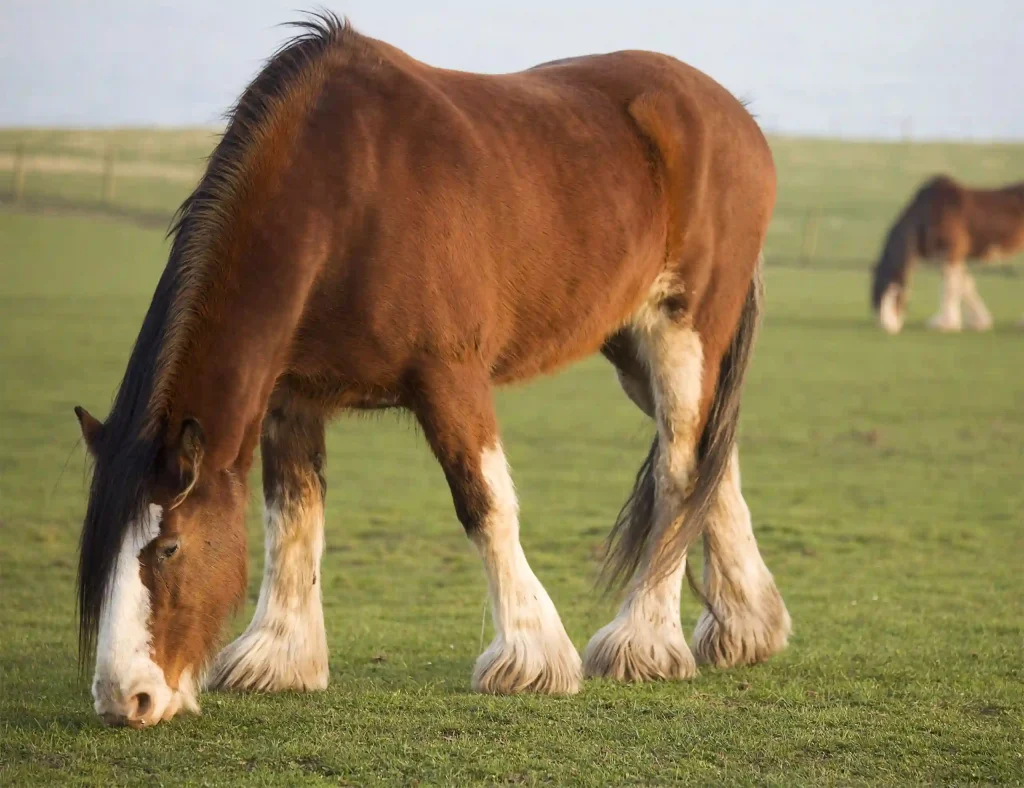
Direct comparison of Clydesdales with regular horse breeds brings into view very striking and varied differences. Ranging from the imposing size to their unique looks, Clydesdales stand out on quite a few fronts. This comparison will go into size, coat colors, height, weight, life expectancy, temperament, uses, and price. This will give this majestic horse its own identity against others.
Appearance
- Clydesdales: As far as their size is concerned, this breed of horses happens to be one of the biggest. They have a typical look about them, with feathered legs, broad chests, and a muscly build. They stand out with long and thick feathers on the lower legs. Gypsy Vanner is another horse breed that also has leg feathers. Their presence is majestically awe-inspiring.
- Regular Horses: Breeds of regular horses are on the end of variability, from size to appearance. The breeds range from compact and stocky Quarter Horses to sleek and lean Thoroughbreds. All these have their distinctive physical characteristics marking them different from each other.
Colors of Coat
- Clydesdales: Clydesdales should traditionally have a bay-colored coat with white markings on their faces and legs. Other than color bay, they can also appear in black, chestnut, grey, or even in roan color. One highlighting feature is that usually, Clydesdales usually have white markings on the body. However, some are found without any markings also.
- Regular Horses: The range of regular horses’ coats is very wide. They can come in bay, black, chestnut, sorrel, gray, palomino, amongst others. In total, their color/pattern diversity is far more than that of the Clydesdales. They will also come with various patterns on the coats, such as leopard, blanket, tobiano, and overo.
Height
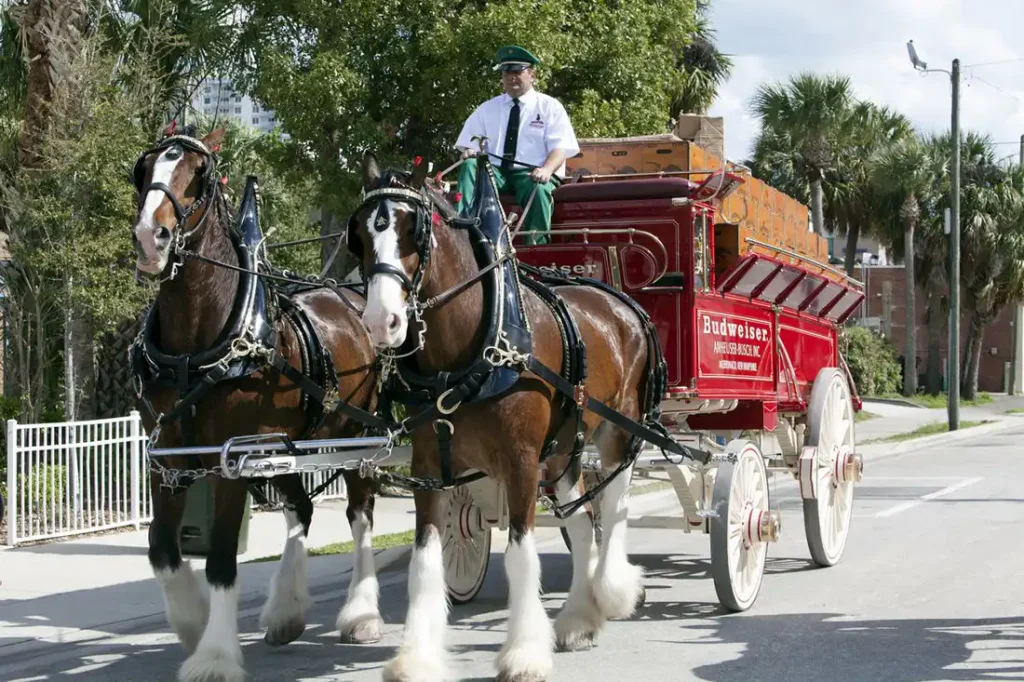
- Clydesdales: They can probably reach up to 16 to 18 hands (163 – 183 cm). Sometimes they can be even taller.
- Regular Horses: The heights differ a lot, but most of the regular horses are smaller than the Clydesdales. The average height lies between 14 and 17 hands (142 – 173 cm). For example, Thoroughbreds can stand about 15 to 17 hands, while Arabians are smaller, about 14 to 15 hands high.
Weight
- Clydesdales: This breed of draft horse can be somewhat imposing, coming in at 1,800 to 2,200 pounds or more.
- Regular Horses: Draft horse breeds vary drastically in weight. The lighter breeds such as Arabians may weigh in at as little as 800 to 1,000 pounds, while larger breeds like Belgians can tip the scales at the weight of a Clydesdale if not more.
Life Span
- Clydesdales: Clydesdale ages about 20 to 25 years, which are shorter than others. They can live longer if treated well.
- Regular Horses: Clydesdale vs regular horse breeds – Regular equine breeds usually have a slightly longer life expectancy, from 25-30 years depending upon the breed and other health criteria.
Temperament
- Clydesdales: Do you know that Clydesdales are cold-blooded? This means that they possess naturally gentle and calm temperament. Therefore, Clydesdales are described as docile and willing for a host of different tasks, even in therapy, exhibitions, and even in high-stress environments.
- Regular Horses: Others are often hot or warm-blood horse breeds. These terms refer to the ability of horses to be spooked. For example, Thoroughbreds are very energetic and spirited, whereas Quarter Horses are commonly observed as calm and versatile in disposition.
Uses
- Clydesdales: Traditionally used for heavy farm work and hauling, Clydesdales can now be found performing in parades, exhibitions, and promotional events. They also feature in competitive driving and as show horses.
- Regular Horses: Horses are one of the most diverse breeds. Most regular breeds (not as strong as Clydesdales) will be usually used in horse racing, dressage, jumping, and trail rides.
Prices
- Clydesdales: A Clydesdale can cost from $5,000 to over $25,000, depending on age, training, and bloodline.
- Regular Horses: The cost is very wide-ranging. For example, a well-bred Thoroughbred racehorse will cost hundreds of thousands or even millions of dollars, while some average riding horse would cost somewhere between $3,000 and $10,000. Clydesdale vs regular horse breeds – you can see that Clydesdales are much more expensive.
FAQs
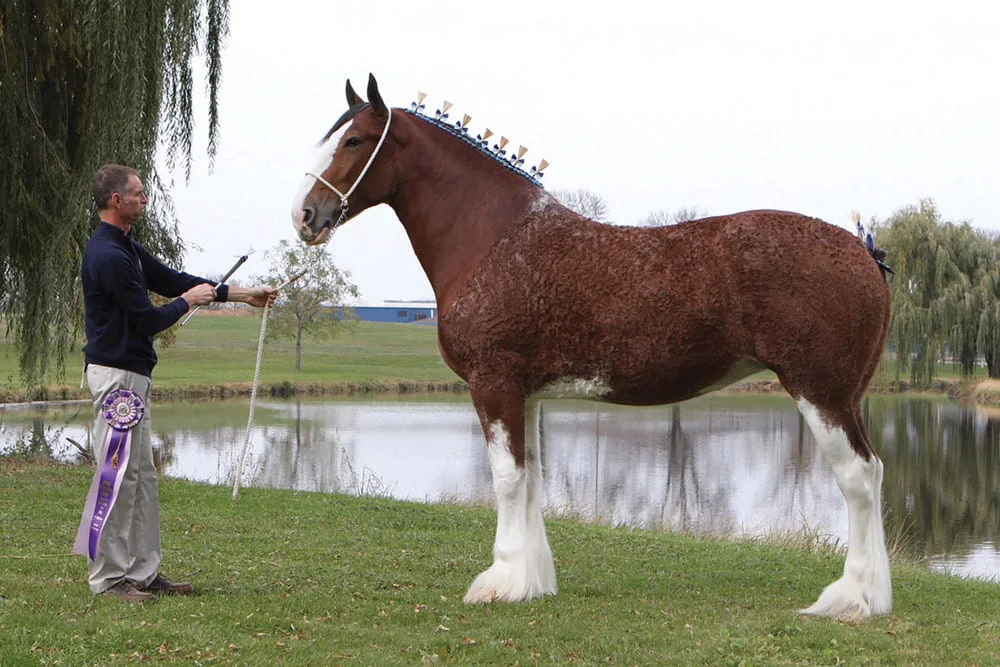
Even though Clydesdales are among the largest of horse breeds—standing 16 to 18 hands high and weighing as much as 2,200 pounds—there are a few breeds that can be larger. Specifically, the Shire horse is commonly taller and heavier than Clydesdales. Shires stand over 18 hands tall and weigh up to 2,400 pounds or more, so they are really the biggest horse breed in terms of both measure and mass.
The Clydesdale is generally a mild and calm breed that can be quite appropriate for beginners. Harnessed in their docility and will to work, they become relatively easy to handle. Their large size, however, may be intimidating to some novices who require a quite confident rider out of the saddle to manage their strength and size. Good training and supervision are so important to make a riding experience safe and enjoyable for a beginner.
Yes, Clydesdales have been featured in numerous film and television programs, mostly due to their majestic looks. One such example would be Budweiser Clydesdales, known to star in many commercials and promotional films that turned them most symbolic in American advertising history.
Bottom Line
Clydesdale vs regular horse breeds – Comparing Clydesdales with other horse breeds, one can easily find the presence of unique characteristics in each. The towering height, substantial weight, and feathered legs set them apart with their beautiful looks and magnificent appearance. It is their gentle nature and historical existence that further make them different from other breeds.

